
Concept explainers
(a)
Interpretation:
The given compound is a carbonyl compound or acyl compound has to be classified.
Concept Introduction:
Carbonyl groups are the one which contain a double bond between carbon and oxygen atom.
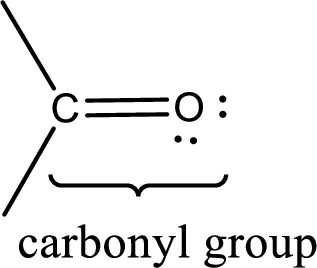
If a hydroxyl group is attached to a carbonyl group means it is known as carboxyl group. This can be represented as shown below,


Carbon bonded to an oxygen atom through double bond is known as carbonyl group. The carbonyl group bonded to a R group means it is known as acyl group. If the acyl group is bonded to oxygen, nitrogen or halogen atom then the compound is known as acyl compound. If the acyl group is bonded to a carbon or hydrogen atom, then the compound is known as carbonyl compound.
(b)
Interpretation:
The given compound is a carbonyl compound or acyl compound has to be classified.
Concept Introduction:
Carbonyl groups are the one which contain a double bond between carbon and oxygen atom. Aldehydes and ketones possess this carbonyl functional group in it. The structural representation of a carbonyl group can be given as shown below,

If a hydroxyl group is attached to a carbonyl group means it is known as carboxyl group. This can be represented as shown below,
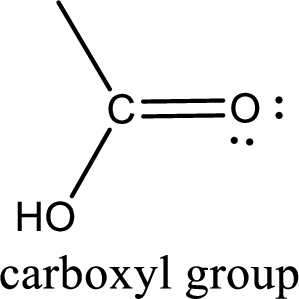
Carboxylic acid derivatives are the ones that are synthesized from or converted to a carboxylic acid. The generalized structural representation of carboxylic acid derivatives is shown below,

Carbon bonded to an oxygen atom through double bond is known as carbonyl group. The carbonyl group bonded to a R group means it is known as acyl group. If the acyl group is bonded to oxygen, nitrogen or halogen atom then the compound is known as acyl compound. If the acyl group is bonded to a carbon or hydrogen atom, then the compound is known as carbonyl compound.
(c)
Interpretation:
The given compound is a carbonyl compound or acyl compound has to be classified.
Concept Introduction:
Carbonyl groups are the one which contain a double bond between carbon and oxygen atom. Aldehydes and ketones possess this carbonyl functional group in it. The structural representation of a carbonyl group can be given as shown below,
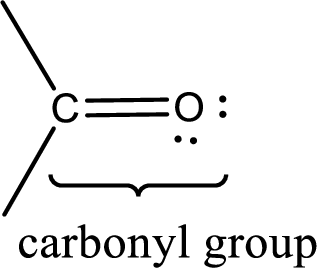
If a hydroxyl group is attached to a carbonyl group means it is known as carboxyl group. This can be represented as shown below,
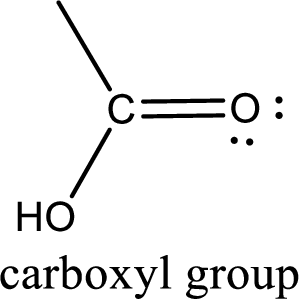
Carboxylic acid derivatives are the ones that are synthesized from or converted to a carboxylic acid. The generalized structural representation of carboxylic acid derivatives is shown below,
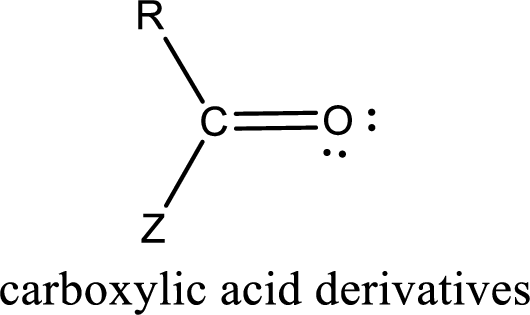
Carbon bonded to an oxygen atom through double bond is known as carbonyl group. The carbonyl group bonded to a R group means it is known as acyl group. If the acyl group is bonded to oxygen, nitrogen or halogen atom then the compound is known as acyl compound. If the acyl group is bonded to a carbon or hydrogen atom, then the compound is known as carbonyl compound.
(d)
Interpretation:
The given compound is a carbonyl compound or acyl compound has to be classified.
Concept Introduction:
Carbonyl groups are the one which contain a double bond between carbon and oxygen atom. Aldehydes and ketones possess this carbonyl functional group in it. The structural representation of a carbonyl group can be given as shown below,

If a hydroxyl group is attached to a carbonyl group means it is known as carboxyl group. This can be represented as shown below,
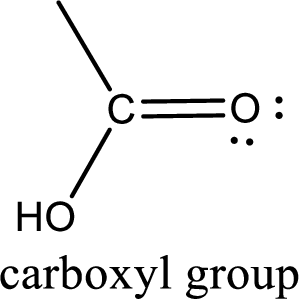
Carboxylic acid derivatives are the ones that are synthesized from or converted to a carboxylic acid. The generalized structural representation of carboxylic acid derivatives is shown below,
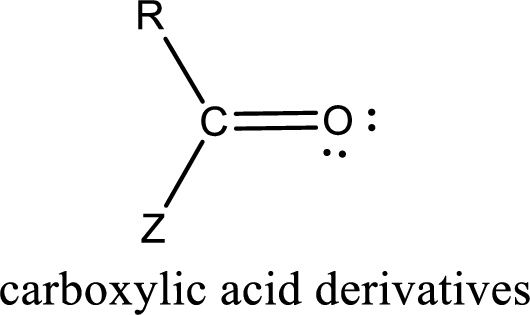
Carbon bonded to an oxygen atom through double bond is known as carbonyl group. The carbonyl group bonded to a R group means it is known as acyl group. If the acyl group is bonded to oxygen, nitrogen or halogen atom then the compound is known as acyl compound. If the acyl group is bonded to a carbon or hydrogen atom, then the compound is known as carbonyl compound.
Trending nowThis is a popular solution!

Chapter 16 Solutions
EBK GENERAL, ORGANIC, AND BIOLOGICAL CH
- Draw the four stereoisomers of threonine as Fischer projections.arrow_forwardFollowing are Fischer projections for a group of five-carbon sugars, all of which are aldopentoses. Identify the pairs that are enantiomers and the pairs that are epimers. (The sugars shown here are not all of the possible five-carbon )arrow_forwardFollowing are Fischer projection for a group of five carbon sugars,all of which are aldopentoses. Identify the pairs that are enantiomers and the pairs that are epimers.(The sugar shown herebare not all of the possible five carbon sugars.)arrow_forward
- Following are Fischer projections for a group of five-carbon sugars, all of which are aldopentoses. Identify the pairs that are enantiomers. CHO сно H-C- OH H-C-OH H-C- OH но-с — н н-с—он но- ČHOH ČH,OH сно CHO Н-с—он но—с— н H-C- OH H-C-OH но—с—н Н-с—он ČHOH ČH,OH сно сно н-с—он но—с —н но—с— н но -с — н H-C- OH но- C-H ČH,OH ČH,OHarrow_forwardFor A, B, C, D, E, F, identify the circled functional groups and linkages in the compound in the picture.arrow_forwardName the following compound and indicate whether or not is a reducing sugar:arrow_forward
- Convert the following Fischer structures into cyclic Haworth structures:arrow_forwardIdentify each of the following Haworth projection formulas as an a-D monosaccharide or a ß D-monosaccharide.arrow_forwardWhich form of aspartic acid in Problem 18.54 is the zwitterion? What is the pI for the zwitterion?arrow_forward
- Does trehalose (Problem 20.68) have an acetal grouping? A hemiacetal grouping? Do you expect trehalose to be a reducing or nonreducing sugar? Classify the linkage between the two monosaccharides.arrow_forwardWhat is the complete name of the following sugar? но он носн он Write out the words alpha and beta. This question is case-sensitive. Capitalize only the configuration designation, D or L, example: beta-D-glucopyranose.arrow_forwardGive one specific sample structure (Fischer Projection or Haworth) of the following carbohydrate derivatives: - Amino-sugararrow_forward

